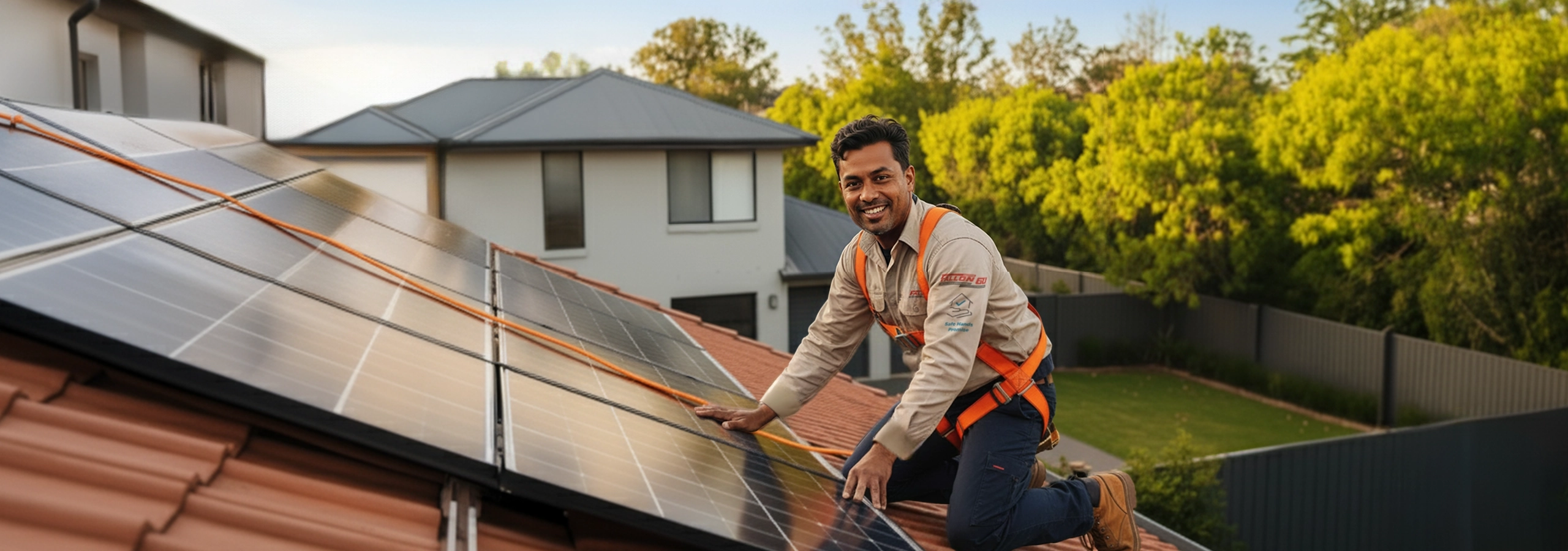19 November 2025
Preparing for Storm Season in South East Queensland: What You Need to Know
Every year, South East Queensland braces for storm season. But what does storm season in SEQ really mean, and how can you prepare for the unpredictable mix of severe thunderstorms, cyclones, floods, and heatwaves?
Whether you’re in Indooroopilly, Burleigh Heads, River Heights or Noosa, South East Queensland locations can face drastically different storm challenges, so you need to be prepared. Let’s explore the facts, the predictions, and practical steps to keep your family, home, and business safe.
When is Storm Season in SEQ?
South East Queensland’s storm season typically runs from September to Februaryl, with peak activity between November and January. This period coincides with the Australian cyclone season, when tropical lows and cyclones form across the Coral Sea and Gulf of Carpentaria.
Did you know the Bureau of Meteorology (BoM) issues daily weather warnings to help residents prepare for sudden changes? Bookmark resources like the BoM cyclone outlook and the BCC Emergency Dashboard to stay informed. Councils across the Gold Coast and Sunshine Coast also provide their own emergency dashboards and local alerts to help residents stay updated during severe weather.
Cyclone Season in SEQ: 2024 Predictions and 2025 Outlook
Have you ever wondered what the experts predict for the coming cyclone season in SEQ?
- Cyclone season 2024 predictions suggest above-average activity due to warmer sea surface temperatures linked to El Niño–Southern Oscillation cycles.
- Looking ahead, cyclone 2025 models indicate a similar pattern, with at least one severe system expected to cross the coast.
Categories of Cyclone: Why They Matter
Cyclones are classified from Category 1 to Category 5. A Cat 3 cyclone can bring destructive winds exceeding 165 km/h. Once storms reach Cat 4 or Cat 5, the potential for catastrophic damage is high.
Fact: While cyclones can kill you, if safety measures are ignored, most fatalities are preventable with preparation and awareness.
Severe Thunderstorms and Flooding Risks
SEQ isn’t just about cyclones. Severe thunderstorms often bring intense rainfall, lightning, and damaging winds. In Brisbane and across the southeast, flash flooding is a frequent risk.
- Severe thunderstorms in Queensland are often accompanied by hailstorms capable of damaging cars, homes, and powerlines.
Have you checked if your insurance covers storm and flood damage? Many homeowners discover too late that their policies exclude flood events. If your home’s electrical systems have been affected by flooding, book an electrical inspection with Fallon Solutions.
Heatwaves: The Silent Threat
While cyclones and thunderstorms make headlines, SEQ’s severe heatwave warnings are increasingly common. Prolonged extreme heat can be deadly, especially for vulnerable groups like children, the elderly, and outdoor workers.
How to Stay Safe During a Heatwave
- Stay hydrated and avoid strenuous activity in peak heat.
- Use air conditioning or seek cooler community facilities. Make sure your system’s ready for summer with professional air conditioning maintenance.
- Look out for neighbours and family who may need extra support.
Stay Powered Through Storm Season with a Solar Battery
As Queensland’s storm season approaches, reliable power becomes more important than ever. Installing a solar battery with your Solar PV system not only helps you save on electricity bills but also keeps your home running during outages when the grid goes down. Fallon Solutions provides professionally installed High Voltage LFP Batteries across Brisbane, the Gold Coast and the Sunshine Coast – helping households stay powered, safe and independent year-round. Our accredited solar installers are Solar Accreditation Australia (SAA) approved, and with 24/7 emergency electrical services available, you can count on us to be there when it matters most.
How to Prepare for South East Queensland’s Storm Season
Preparation can make the difference between safety and disaster.
At Home
- Trim overhanging branches and secure loose items around your property.
- Clean gutters and downpipes to prevent water damage. To avoid backyard floods make sure your stormwater drains are clear and undamaged. Check out our drain cleaning services to stay ahead of the seasons.
- Prepare an emergency kit with torches, batteries, water, and non-perishable food.
For Businesses
Storms don’t just affect homes. Business continuity is at stake. Protect data, secure premises, and have a recovery plan. If you’re unsure where to start, explore our storm preparation services to safeguard operations.
Frequently Asked (But Often Overlooked) Questions
Can a cyclone kill you?
Yes. High winds, storm surge, and flooding can be fatal. But fatalities are rare when people follow weather warnings and evacuation orders.
What’s the difference between a weather warning and a flood warning?
- A weather warning covers dangerous conditions like thunderstorms, cyclones, or heatwaves.
- A flood warning is issued when rising river heights are likely to impact property and infrastructure.
Final Thoughts: Don’t Wait for the Warning
Storm season in SEQ is inevitable, but being unprepared is optional. Whether it’s a cyclone, severe thunderstorm, or heatwave, awareness and preparation are key.
Have you checked your emergency kit? Do you know your local evacuation routes? If not, now is the time.
Ready to take action? Contact us today for expert advice, emergency planning, and services designed to keep you safe this Queensland storm season.

